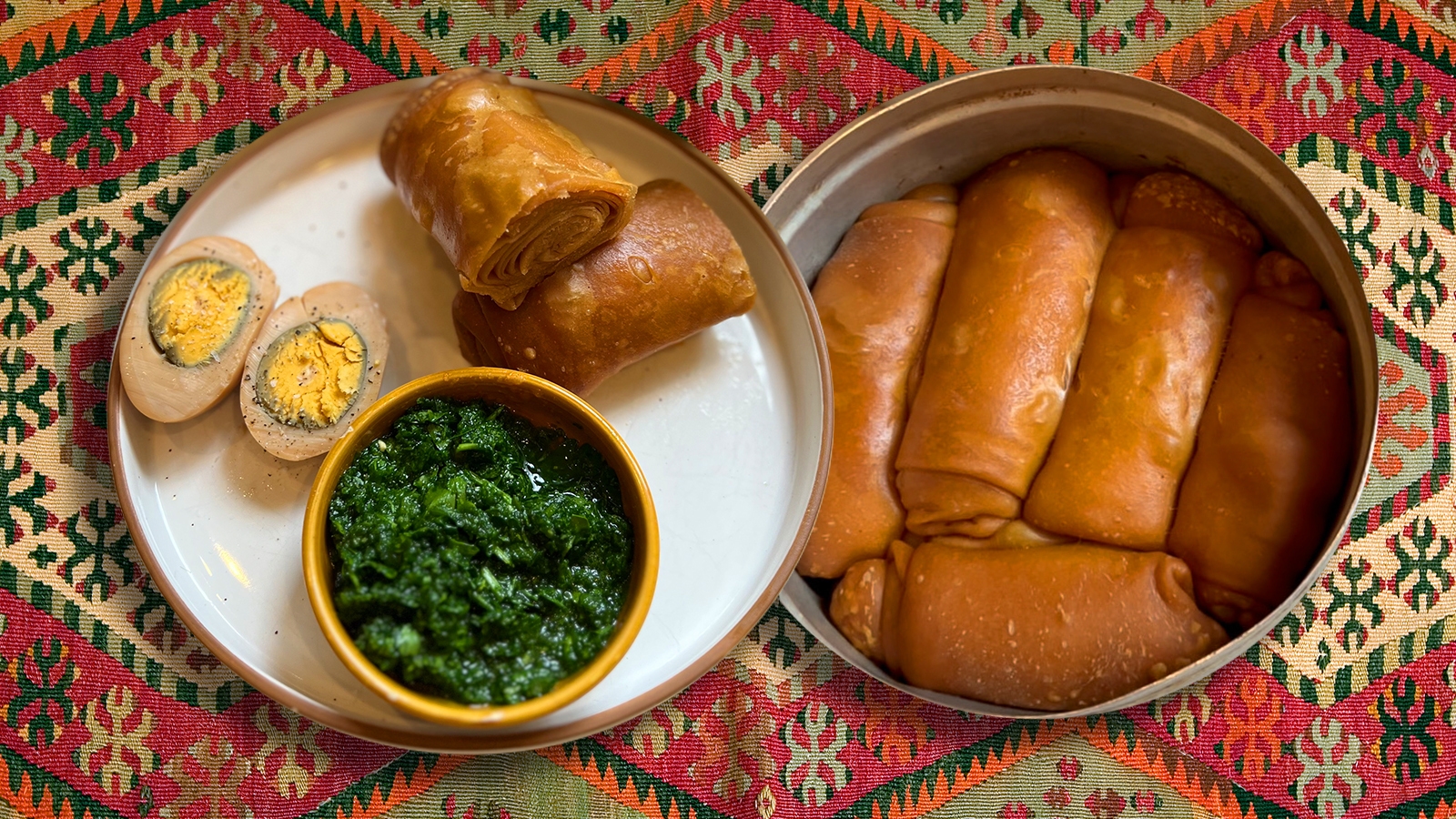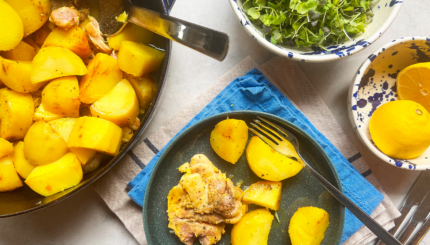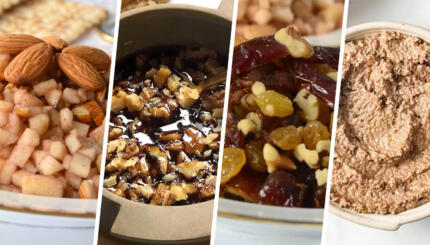In 2023, Tel Aviv celebrated its first ever Jachnun Festival. Celebrity pastry chefs, jachnun joints and hungry crowds gathered at the hip settings of the city’s harbor, enjoying every possible version of the humble star of the party, the Shabbat Yemenite pastry. Alongside classic jachnun, visitors could try stuffed jachnun, spelt flour jachnun and even gluten-free ones. A stand offered Yemenite spicy sauce (zhug) tastings, and another featured a chili pepper eating competition. And to wash it all down, jachnun lovers were offered spiced black coffee, and fig and date arak liquor.
Jachnun is a slightly sweet rolled pastry, made of very thin layers of dough that are brushed with clarified butter. It is the Shabbat dish of the Jews of Aden, in today’s Yemen, and is baked overnight on Friday at a low temperature then eaten for breakfast on Saturday morning.
Israeli food writers wondered how Tel Aviv hasn’t had a jachnun festival until now, but my question is quite different: How did this unassuming pastry make its way from Aden to the heart of Israeli culinary consensus in just 75 short years? It stands there in pride alongside other classics like shakshuka, schnitzel, hummus and chicken soup. When and how did that happen?
First, to clarify, the famous Yemenite jachnun is actually from Aden, not Yemen. (Aden, which was the capital of South Yemen, became part of the country now known as Yemen only in 1990 after the unification of North Yemen and South Yemen.) The Adenite and Yemenite (mainly from around Sana’a) Jewish communities were separate and had different traditions.
The Nosher celebrates the traditions and recipes that have brought Jews together for centuries. Donate today to keep The Nosher's stories and recipes accessible to all.
Adenite and Yemenite Jews met for the first time in the Hashed (or Geula, “redemption” in Hebrew) transit camp arranged by The American Jewish Joint Distribution Committee in 1949 ahead of Operation Magic Carpet that brought them to Israel.
“In Hashed, with ingredients brought by The Joint, is where Yemenites first learned from the Adeni how to make jachnun,” said Moshe David, an Israeli of Adanite roots, a jeweler and author of the cookbook “Disappearing Flavors of the South.”
“More Yemenites learned how to make the dish in the camps in Israel,” where Yemenite and Adenite Jews lived together for years, he told me.
For hundreds of years Aden was a cosmopolitan strategic harbor city. It was ruled by the Ottomans and then by the British. Moshe believes that jachnun originated from an Ottoman pastry called gül böreği (rose-shaped borek). The pastry is made with yufka, a thin dough, thicker than phyllo, that’s used for many Turkish pastries, and is stretched to an almost transparent leaf, then spread with fat, just like jachnun. The original gül böreği, though, is stuffed with meat, while jachnun is only brushed with fat and then rolled.
In the past, jachnun was actually served as a sweet dish, topped with honey (and later, in Israel, with sugar).
“They used to serve it with halva or Turkish delight,” said David. “That’s what convinced me the origin is Ottoman. They would also serve it with quince jam,” a testament of the Adenite connection to the Silk Road and Persian cuisine.
In search for the origins of the dish, I found an unusual version of jachnun in two of Molly Bar-David’s books. Bar-David was a Jewish American who emigrated to Israel in the 1940s and documented Jewish dishes of immigrants that arrived in Israel from all across the Jewish Diaspora. She quotes a recipe for ghihinoon (Yemenite Cakes) from her Yemenite housekeeper, Margalit, who used to sprinkle chopped nuts, jam or cottage cheese on the dough before rolling it and baking.
I should add that the 1964 book is packed with condescending comments toward the many Mizrahi and Sephardi Jews mentioned in the book. Margalit (last name is not provided) was not spared. In general, this was in line with the way many Ashkenazi Jews at the time viewed Jews from Arab and Muslim countries.
Moshe thinks that Bar-David mistakenly mixed g’hin, “dough” in Yemenite, with ghihinoon. But when I asked a Yemenite-Israeli Facebook group about it, one member said she too spreads the dough with jam before baking. Still, most Yemenite Israelis in the group found that idea amusing, and jokingly suggested serving jachnun with whipped cream and chocolate sauce.
Jachnun evolved into a savory course, and became nationwide phenomena, fairly recently, in the 1980s when a chain of Yemenite restaurants named Nargila (hookah) took Israel by storm. Nargila offered a limited menu, and jachnun and malawach were the stars. The pastries were served with grated tomatoes mixed with zhug, which became the standard for Yemenites and even for some Adenite Jews.
These days, jachnun is available in the freezer aisle at any supermarket in Israel, offering an inferior but easy option for those daunted by the labor-intense process of making the dish at home. On the weekends, fresh jachnun is readily available at pop-up roadside stands, cafes and even as part of the famous Israeli breakfast buffet in many hotels. This modest dish has officially become an Israeli staple.



